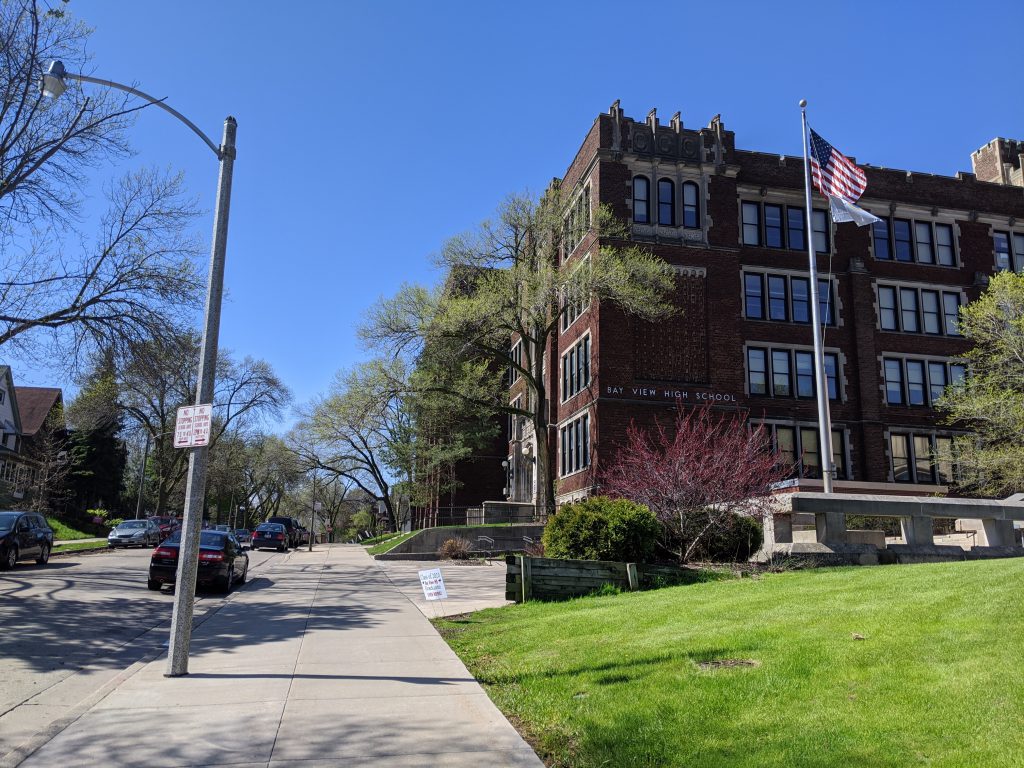MPS Consultant Will Guide Decisions
But it seems to be more about renovating or building new facilities than closing old ones.
Perkins Eastman is an architectural firm with a home office in New York City that Milwaukee Public Schools hired to make recommendations on right sizing the district. While much of the public may see right sizing to mean closing buildings and consolidating programs, Perkins Eastman primarily designs new buildings and renovations. It has 24 studios in cities located across the globe.
On their website, they state their orientation: “We create learning environments that serve as the center of their communities and propel students to reach their potential. Drawing on an institution’s educational values, goals, and mission, we develop curriculum-based and program-driven architecture and design for K-12 institutions that are also stand-outs in sustainability and net zero energy.”
Perkin Eastman promotes their work with the Washington, DC, and Boston schools. They place much of their focus on creating net zero energy, with an emphasis on renewable energy through solar panels and other sources. Its website is filled with examples of innovative schools they designed. A video highlights John Lewis Elementary in Washington, DC.
The company made its case in Milwaukee at a presentation online and at various town hall meetings.
Perkins Eastman emphasizes that what parents want for their children involves more than just what schools will remain open and which ones will close. Parents want athletic and specialized learning spaces, modern amenities not provided in aging buildings, and improved outdoor spaces. What the parents and teachers said at the four MPS townhall meetings confirmed this; many expressed such concerns.
Yet it is clear that the district has over capacity, though not in the way the public might think. As Perkins Eastman said in its presentation, “The MPS overall utilization rate is healthy at 80%, but enrollment is uneven. Around 1/4 of schools are underutilized, 1/4 are overcrowded.”
“We are not closing 40 or 50 schools,” Superintendent Eduardo Galvan told Urban Milwaukee in the hallway of Madison High School on the evening of the company’s presentation.
Median building utilization by school type shows some big differences, with elementary at 70% utilization of facilities, K-8 at 84%, middle school at 32%, and high school at 66%.
Perkins Eastman states that many classrooms simply do not fit well with the number of students and their programs. Of the 144 buildings, 61 were built before World War II. Only 26% are air conditioned. Yet most buildings are considered to be in good or great condition even if they no longer match present educational needs. Even if some buildings will be closed, Perkins Eastman doesn’t know at this time how many maintained buildings would require renovation if not outright replacement.
One issue that may raise eyebrows is that Perkin Eastman can make recommendations for new construction and renovation and then, turn around and bid on those various projects. Matthew Chason, Senior Director of the MPS Office of Accountability and Efficiency, reviews all contracts with outside providers for the district. He states that the district tries to stay away from contracts for services from the very organizations consulting on various projects, but sometimes it does happen.
But even if Perkins Eastman ultimately isn’t awarded any projects by MPS, it collects a nice fee. Its contract for facilities analysis is for $837,728 with a possible addition of $15,000 for travel.
In its request for proposal (RFP) for the long-range facilities master planning services dated January 8, 2024, MPS made it clear what it was looking for. “The following are areas that should be considered,” it noted, and then listed 24 areas, including early childhood classrooms, before and after school programs, career and technical education and community use of schools by institutes of higher learning. But other items range pretty far from building capacity, including “Wisconsin Open Enrollment: including how to attract students to MPS,” “how to expand or utilize a virtual education model to replicate popular programs,” and “Furnishings and classroom improvements to support educational models.”
The RFP’s last consideration is a major feature of Perkins Eastman: “energy efficiency and environmental initiatives/trends.”
The MPS master plan is clearly more aspirational than something quickly implemented. Its timeline is for the next five to ten years. It states, “District does not anticipate available funding for significant building upgrades or modifications within the next 5 years. Therefore, strategic and best use of existing resources will be important and understanding how best to implement improvements over time.”
What Perkins Eastman can do is create a vision for the future. But that vision may not close very many schools.
The specifications for the right sizing the district and the final contract with Perkins Eastman was done under the school administration of Keith Posley, who is no longer superintendent. Whether the present school administration and board has the same vision on how to right size the district is not clear. But they are already more than halfway into the contract with the company.
“Contract term shall be Friday, March 29, 2024 through Thursday, January 30, 2025,” the master plan states.
If you think stories like this are important, become a member of Urban Milwaukee and help support real, independent journalism. Plus you get some cool added benefits.
More about the MPS Financial Crisis
- New MPS Superintendent Left Prior Job During Period It Faced Similar Criticism - Corrinne Hess - Feb 14th, 2025
- MPS Audit Finds ‘Culture of Fear and Reluctance to Change’ - Jeramey Jannene - Feb 13th, 2025
- K-12 Education: Meet the New MPS Superintendent - Terry Falk - Feb 11th, 2025
- MPS Still Owes Financial Data To State - Corrinne Hess - Oct 15th, 2024
- K-12 Education: MPS Consultant Will Guide Decisions - Terry Falk - Oct 9th, 2024
- K-12 Education: Aycha Sawa Faces New Challenges as MPS Financial Officer - Terry Falk - Sep 24th, 2024
- Milwaukee School Board Recall Fails - Graham Kilmer - Aug 19th, 2024
- Gov. Evers Announces MGT Consulting of America Selected to Conduct Independent Audit of MPS Operations - Gov. Tony Evers - Jul 29th, 2024
- MTEA Files Ethics Complaint Against Secretive “Recall Collaborative” After Recall Organizers Admit to “Anonymous Donors” - Milwaukee Teachers’ Education Association - Jul 26th, 2024
- Milwaukee Board of School Directors Statement Regarding an Interim Superintendent of Schools - Milwaukee Public Schools - Jul 25th, 2024
Read more about MPS Financial Crisis here
K-12 Education
-
MPS Training in Science of Reading Going Poorly
 Nov 23rd, 2025 by Terry Falk
Nov 23rd, 2025 by Terry Falk
-
The Fear Factor at MPS
 Nov 11th, 2025 by Terry Falk
Nov 11th, 2025 by Terry Falk
-
MPS Reaching Out to Community
 Nov 2nd, 2025 by Terry Falk
Nov 2nd, 2025 by Terry Falk






















But shouldn’t every school be evaluated for location, condition and utilization?
Shouldn’t the possibility of merging schools and selling properties that have no full purpose be on the table?
What about new ideas such as elimination middle schools and making elementary k-8 and make sure the high schools are fully utilized?
Or.??????????
There are surely many new ideas that should be discussed and evaluated before we ‘renovate’ every damn building whether it is used or not.